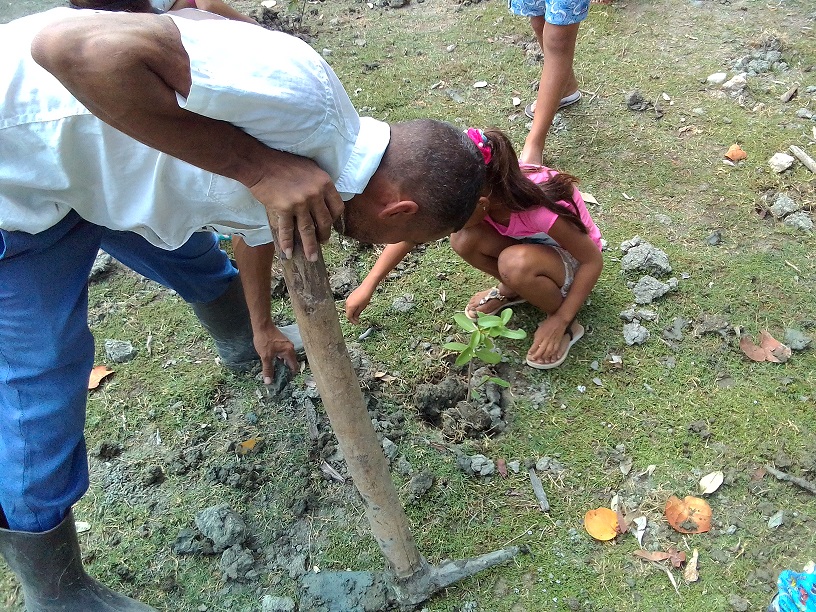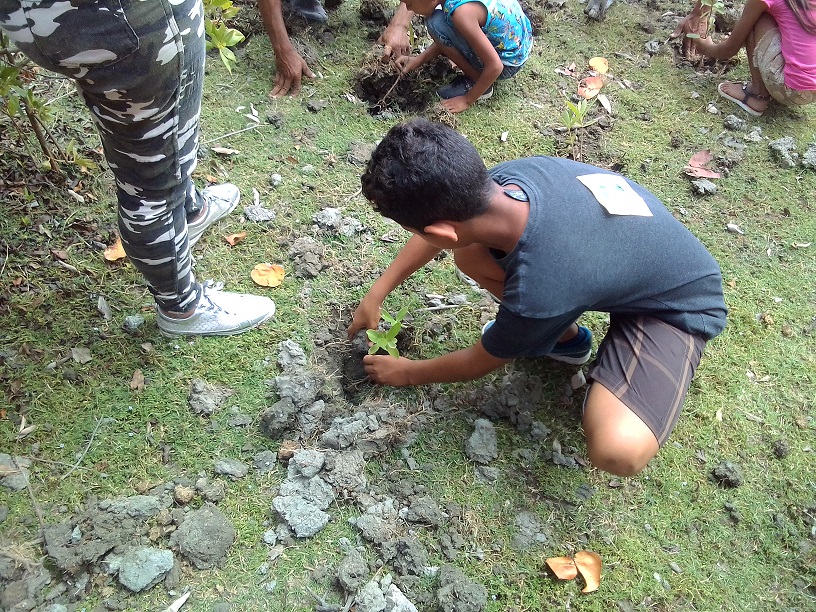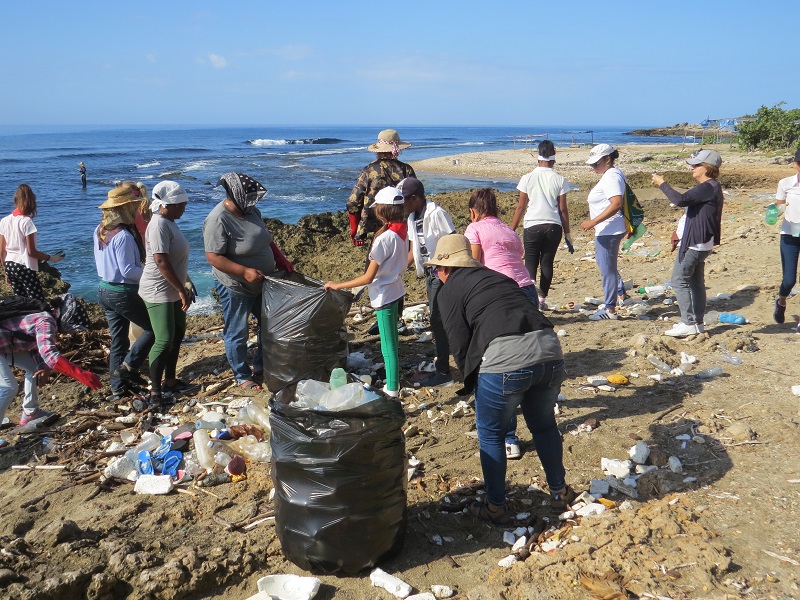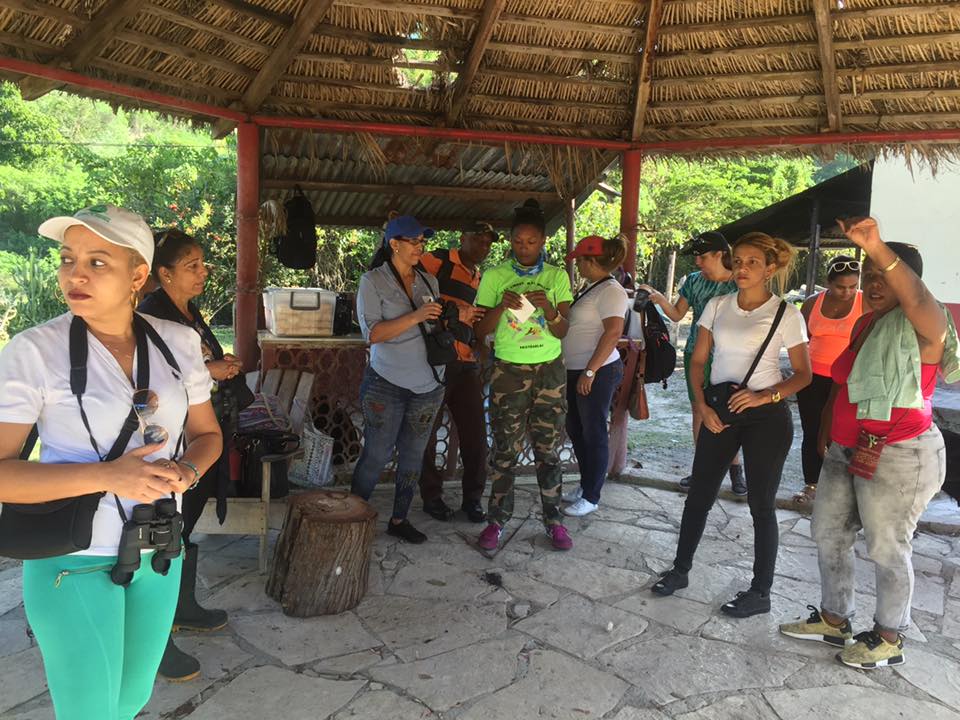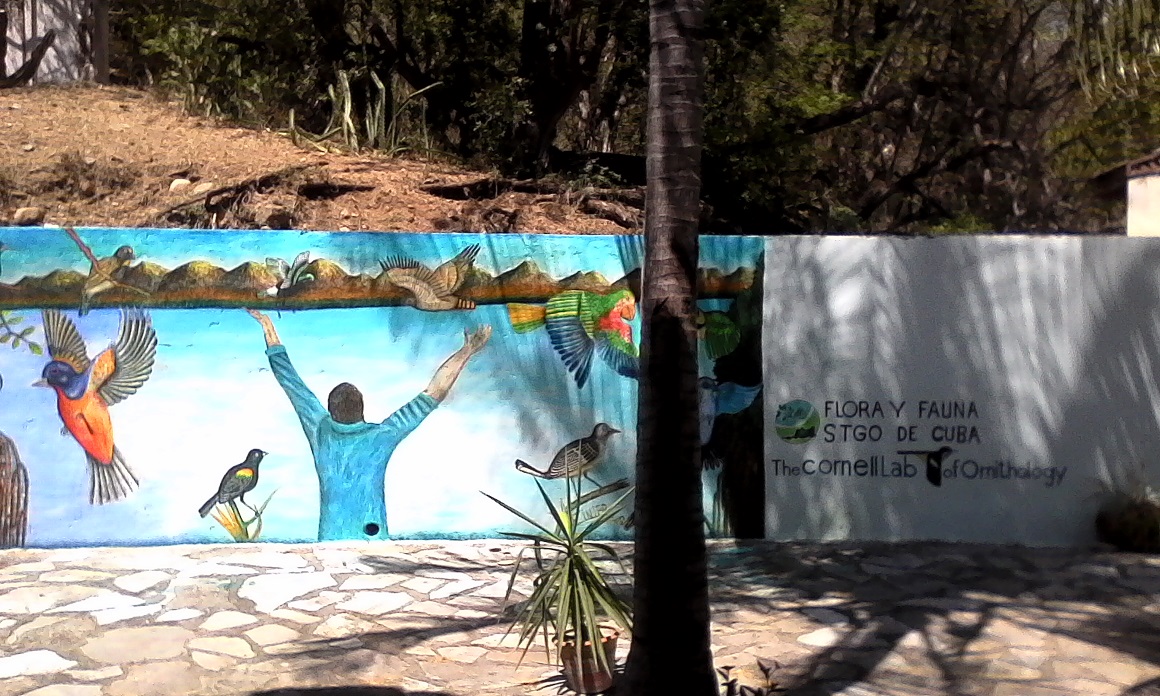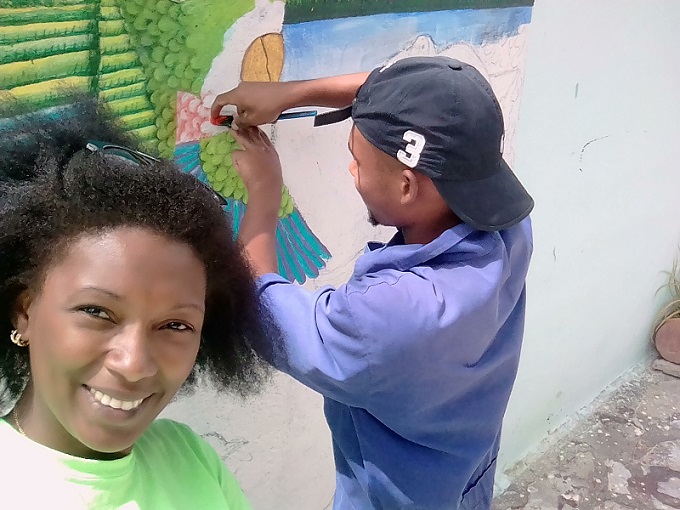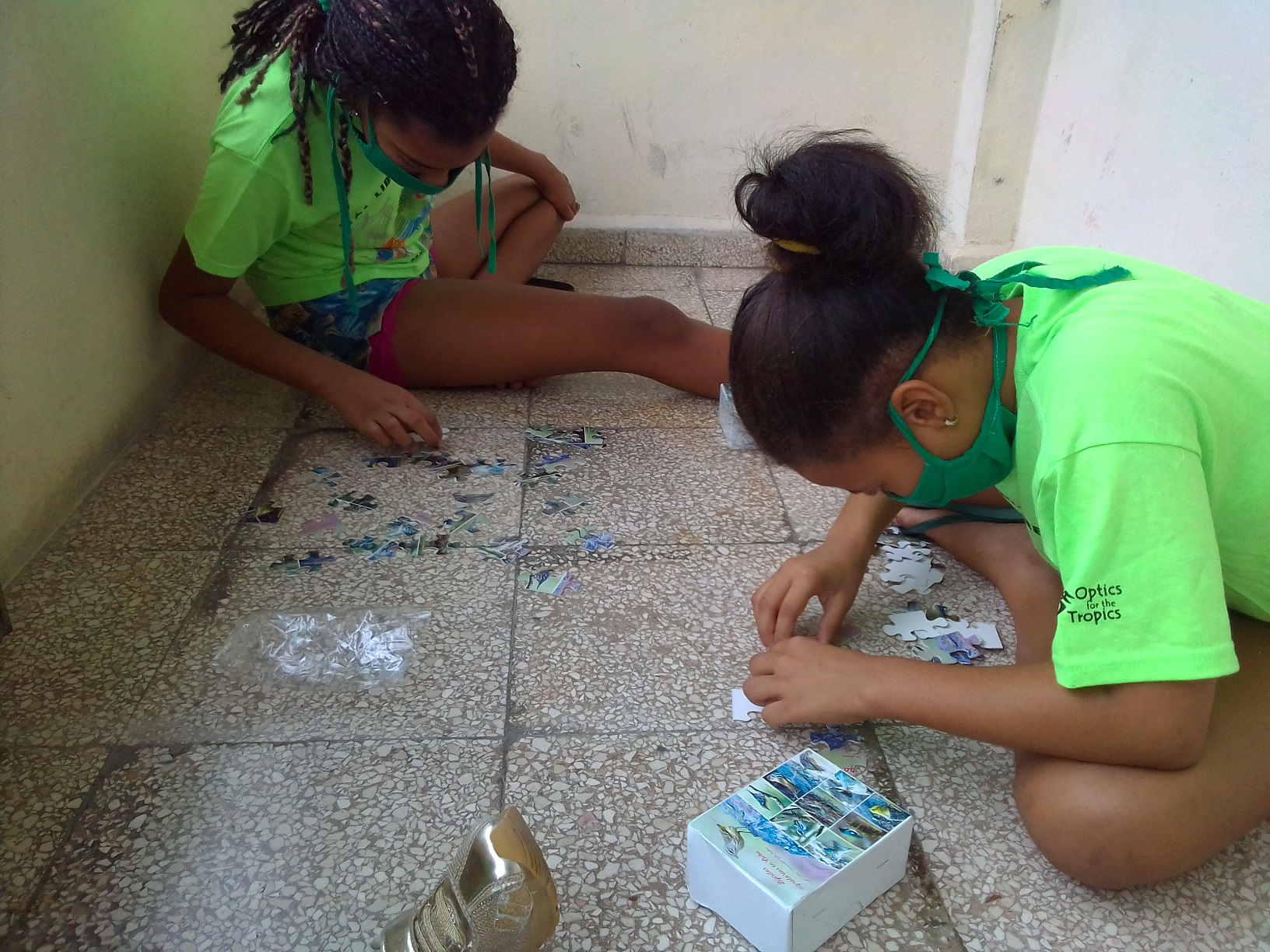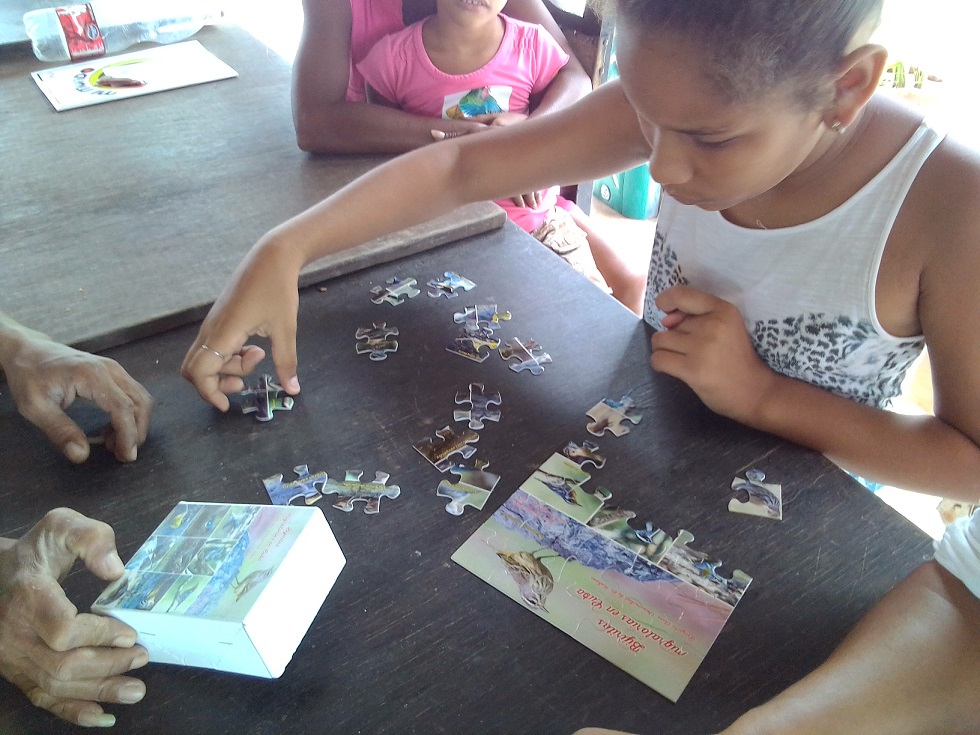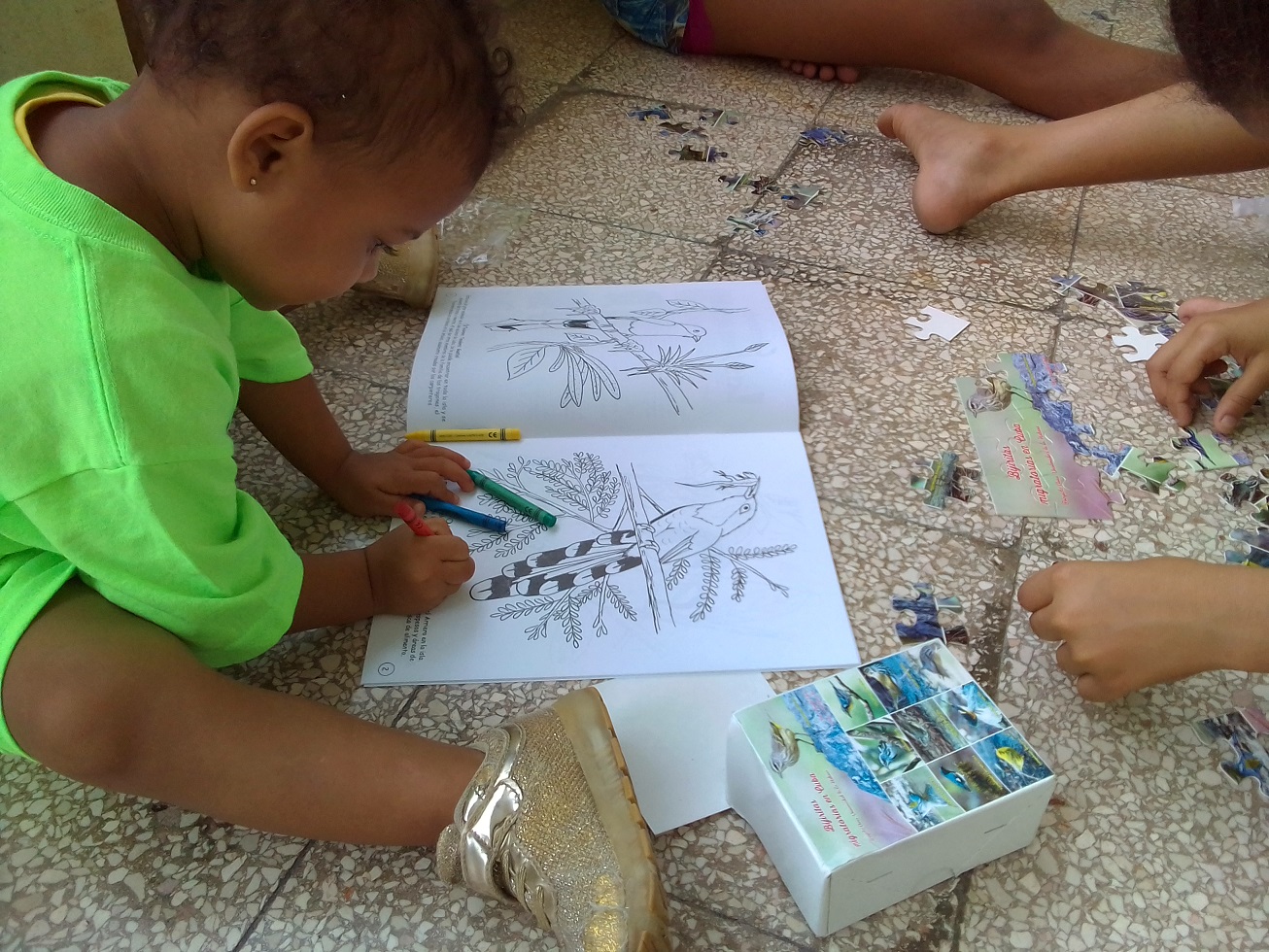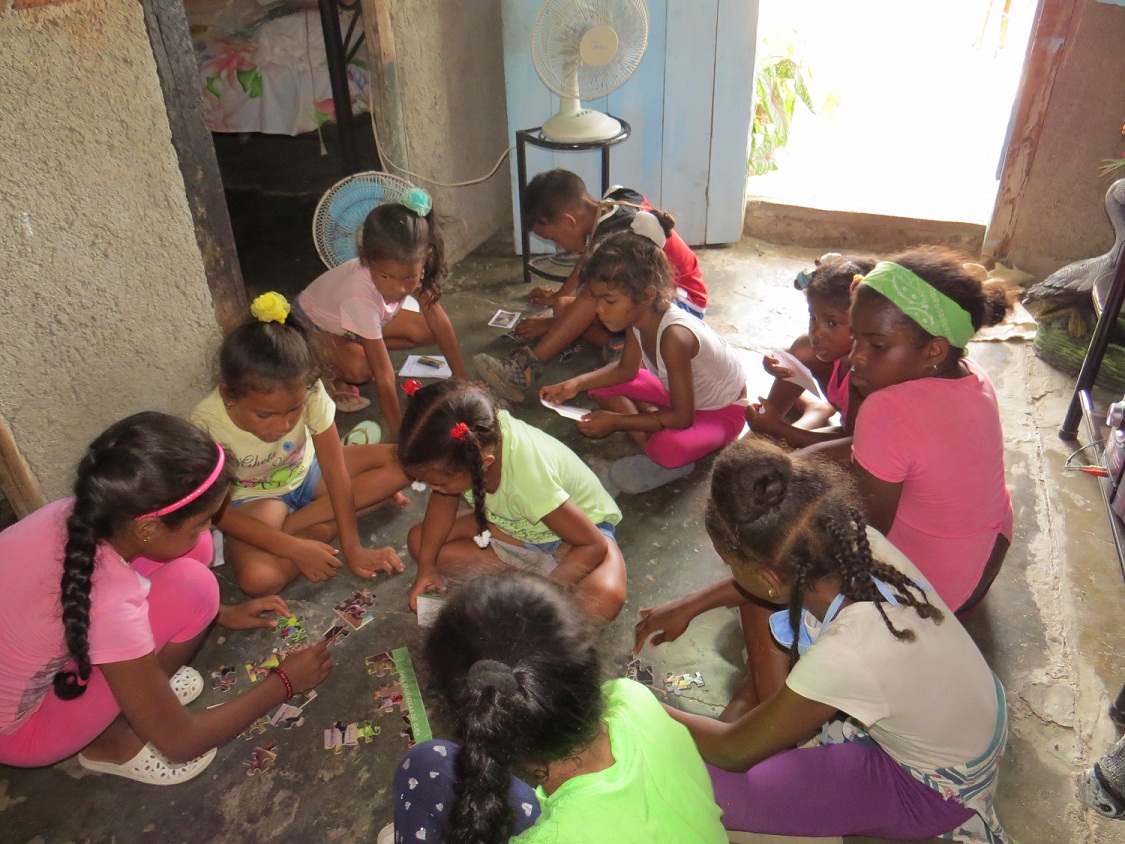The Empresa Flora y Fauna Santiago de Cuba is an organization that promotes the appreciation and conservation of the wild flora and fauna in rural communities surrounding protected areas in Cuba. At the end of 2019, the Empresa Flora y Fauna Santiago de Cuba won a mini-grant from the Cornell Lab of Ornithology for Latin American and Caribbean organizations. Two of the organization’s coordinators, Inés Lourdes Fernandez Rodriguez and Kenia Mastril, organized and led inspiring educational activities for children and families in many communities of the Santiago de Cuba province in Cuba over several months. At first the enjoyable activities took place in groups in the outdoors. With the arrival of the COVID-19 the activities for the later months could not be held as planned. Nevertheless the motivated coordinators organized activities that could be done from home so a the series of activities continued! This way everyone could have fun and learn about birds and nature while still protecting each other and staying at home.
Below are some details on the series of activities that the Empresa Flora y Fauna Santiago de Cuba created in Cuba before and during this global pandemic. Many congratulations to the whole team!
Plant your tree to protect the planet!
The activity “Plant your Tree, Protect the Planet” took place at the Zoo in the city of Santiago of Cuba. Participation of local children and adults was great! The goal of the activity was to encourage participants to learn about and gain interest in their local native trees. Trees are a source of life, shelter and nourishment to many creatures such as local and migratory birds, other animals, and us!
The activity was also an excellent opportunity for educators and youth to bond over the importance of birds and their connection to trees and the rest of nature. Participants were asked if they knew some migratory birds and when during the year they observed them in their communities. They responded with enthusiasm and gave examples like Mariposa (Passerina ciris), Azulejo (Passerina cyanea), and many others. It was amazing to see the participants’ excitement when they identified the birds they found in their community.
Some participants commented that they knew some of the birds’ names because their neighbors would capture them to watch them sing. Some examples of these birds with this sad destiny are el Negrito (Melopyrrha nigra) and the Sinsonte (Mimus polyglottos). This conversation also provided the opportunity to speak about migratory birds and the importance of their freedom. It is important to appreciate their beauty and songs when they visit the region, but also to allow them to come and go as they please. This way, everyone can enjoy observing them and they can continue their roles in nature. After these reflections and conversations, participants planted young mango, coco, guayaba, lemon, and orange trees to help birds and other wildlife in their community. How wonderful! Two people who helped make this event possible were Osmany Fernandez R. and Sandra Lafargue H. Thank you!
Discovering local birds
In the school Centro Mixto participants learned about the importance of both resident and migratory birds. The participants shared the names of some migratory birds which regularly visit their school and home backyards. This was a great opportunity to go outside and practice using binoculars and the field guide of Cuban birds to identify many local birds!
First participants were divided into two groups. The group that registered the most birds species won a “bird detective diploma.” It was marvelous for the participants to see the colors, movements and details of the birds through the binoculars. At the end of the activity they had identified 9 bird species and 14 individual birds. These observations were registered on eBird. Local people helping to make this activity a success were Yuri Debrost Trute, Mercedes Pichardo, Kenia Mestril Cosme and Milagros Lobaina Marzo.
Zero Plastics = My Birds (Cero plásticos = Mis aves)
This activity consisted of cleaning the beach in the Paisaje Natural Protejido Estrella—Aguadores located east of Santiago de Cuba. This incredible task was done by children and teenagers of the local community. The beach clean-up occurred in coordination with the Loyola Center (Centro Loyola) and the Empresa Flora y Fauna Santiago de Cuba. The students also had the opportunity to send their bird’s observations to the eBird platform.
During the clean-up participants began to realize the damage the plastic waste had done to the beach. Not only does the trash contaminate the water and beach but it also places all the species that live in that area in danger. Motivated by the experience participants brainstormed many ideas of how they could reuse all the plastic that had been collected. This led to the creation of the Plastic Festival which was planned and organized by the students themselves! For one of the activities the students created different outfits using pieces of plastic that they collected during their clean up. They also made figurines, dolls, and other plastic articles with other leftover waste. It is inspiring to see the imagination and creativity of all the students protecting their local environment, educating each other, and making beautiful things!
Grand scale birding
The goal of this activity was to motivate the adults that worked in the offices of the Empresa Flora y Fauna Santiago de Cuba to watch birds. In the Finca San Juan in Santiago of Cuba the workers dedicated one day to watch birds. Participants learned and shared their knowledge about the great benefits of birds to society and the environment. They also learned that by sharing their observations with citizen science projects such as eBird they could make a real impact on the safety and protection of their local birds. At first some participants did not know many of the birds’ names. Thanks to the help of the coordinators and the Cuban bird field guide many of them began to identify and learn about the bird names and their roles in nature. It was truly a wonderful day for all!
Plant a tree, paint a mural
Nature suffers many climatological events, but wetlands and forests are places of refuge, food, and shelter for birds and other animals during these intense, and sometimes destructive, events. Participants discussed these relationships. Later they built a puzzle of migratory birds and identified which migratory birds lived in their community and when they were there. One of the migratory species they identified was the Candelita (Setophaga ruticilla).
The beautifully painted mural was done by a young artist from a community near the laguna and all the participants contributed their colors and ideas to the project. Next it was time to plant! Before planting the area participants learned about the importance of planting correctly in order to have beautiful results. The activity finished with many participants discussing how they were going to continue to plant trees, frequently observe birds, and help teach other community members what they learned.
Activities during COVID-19
The Empresa Flora y Fauna Santiago de Cuba has continued its marvelous work in promoting the appreciation and care of the local environment. Before the COVID-19 outbreak it worked with a system of environmental activists working in rural areas and the communities surrounding protected areas. During the pandemic these activists handed out materials (colored pencils, crayons, coloring books, puzzles, games with bird images, informational brochures, and festival shirts) to the homes of many families of various rural communities. With these materials each activist would give a small seminar on how to engage children, teenagers, and adults in the importance of protecting birds and their habitats. It is amazing to see these people finding ways to engage with their communities and nature despite these uncertain times!
The Empresa Flora y Fauna Santiago de Cuba is very grateful for the amazing support that they received from the schools in the Cuban region, the organization The Friendship Association, in particular Soledad Pagliuca, for providing materials and resources for the activities to Cuba, and to Optics for the Tropics for the binoculars that were received as a part of the mini-grant. A special thanks to the members of the Empresa Flora y Fauna Santiago de Cuba for actively participating in the organization and implementation of the activities – Inés Lourdes Fernández Rodríguez, Fauna Specialist, Kenia Mestril Cosme, conservation specialist, Milagros Lobaina Marzo, environmental promoter of the protected area Paisaje Natural Protegido Estrella en Aguadores, and the Ing. Yuri Debrost Trutie, forest engineer and conversation specialist. They are also thankful for the support of Yordanis Gómez Rodríguez, administrator of the protected area Ecological Reserve Loma del Gato Monte and Aliuska Rojas Ocaña, environmental educator of the coastal community Caima Chico.
Thank you for the images provided by Empresa Nacional Flora y Fauna Santiago de Cuba.
Written by Ashley Calderon, Julia Luna, Natalie Bonilla

